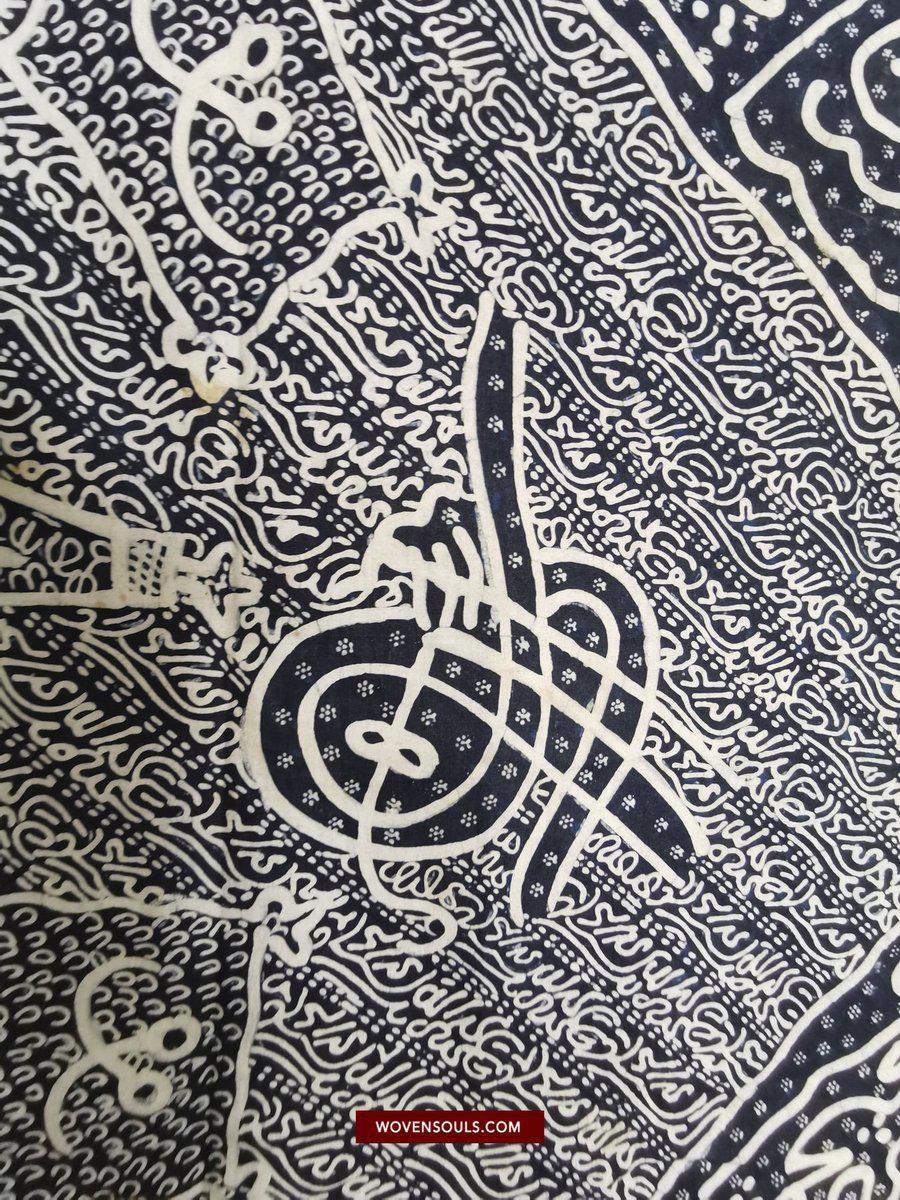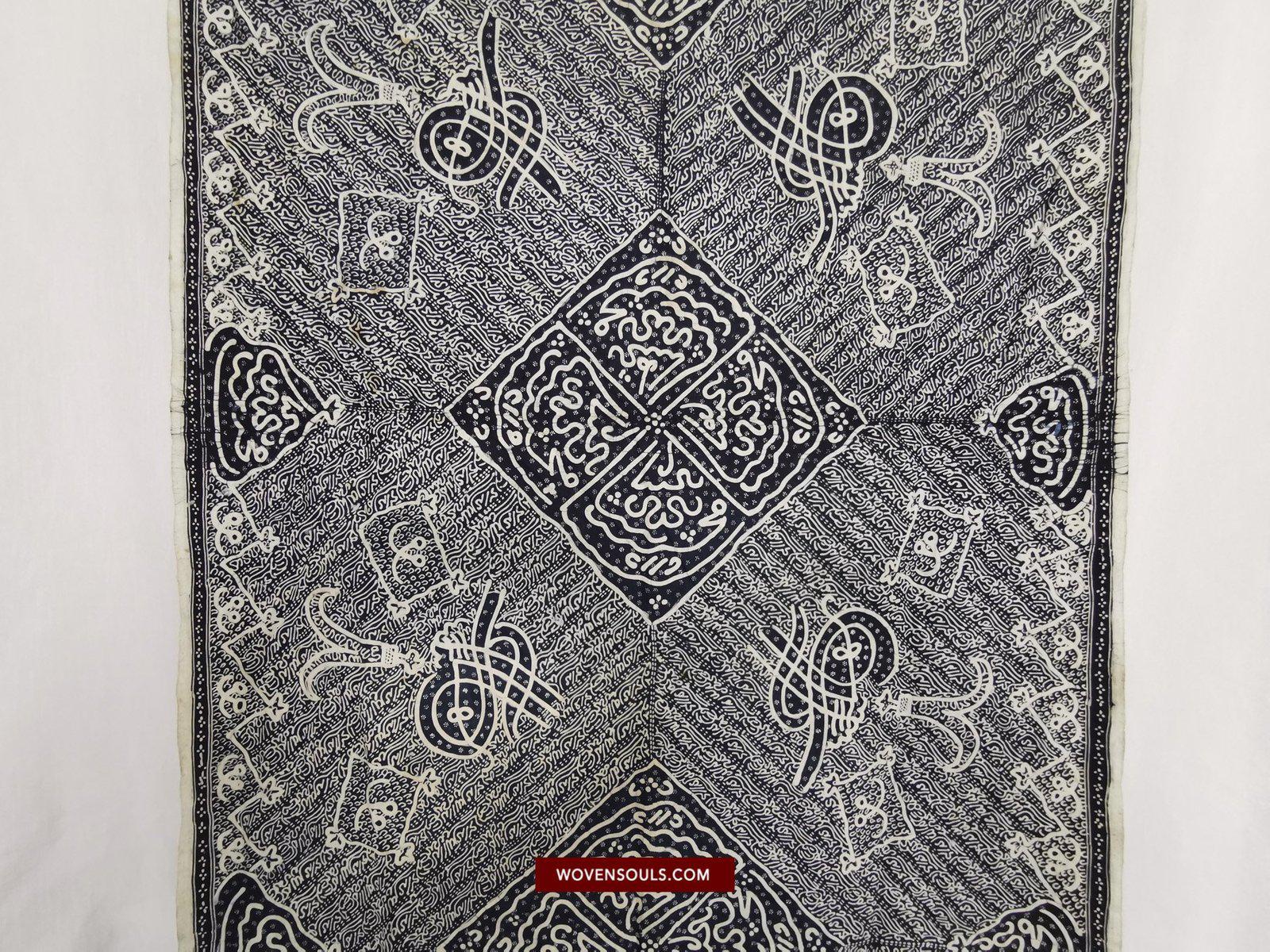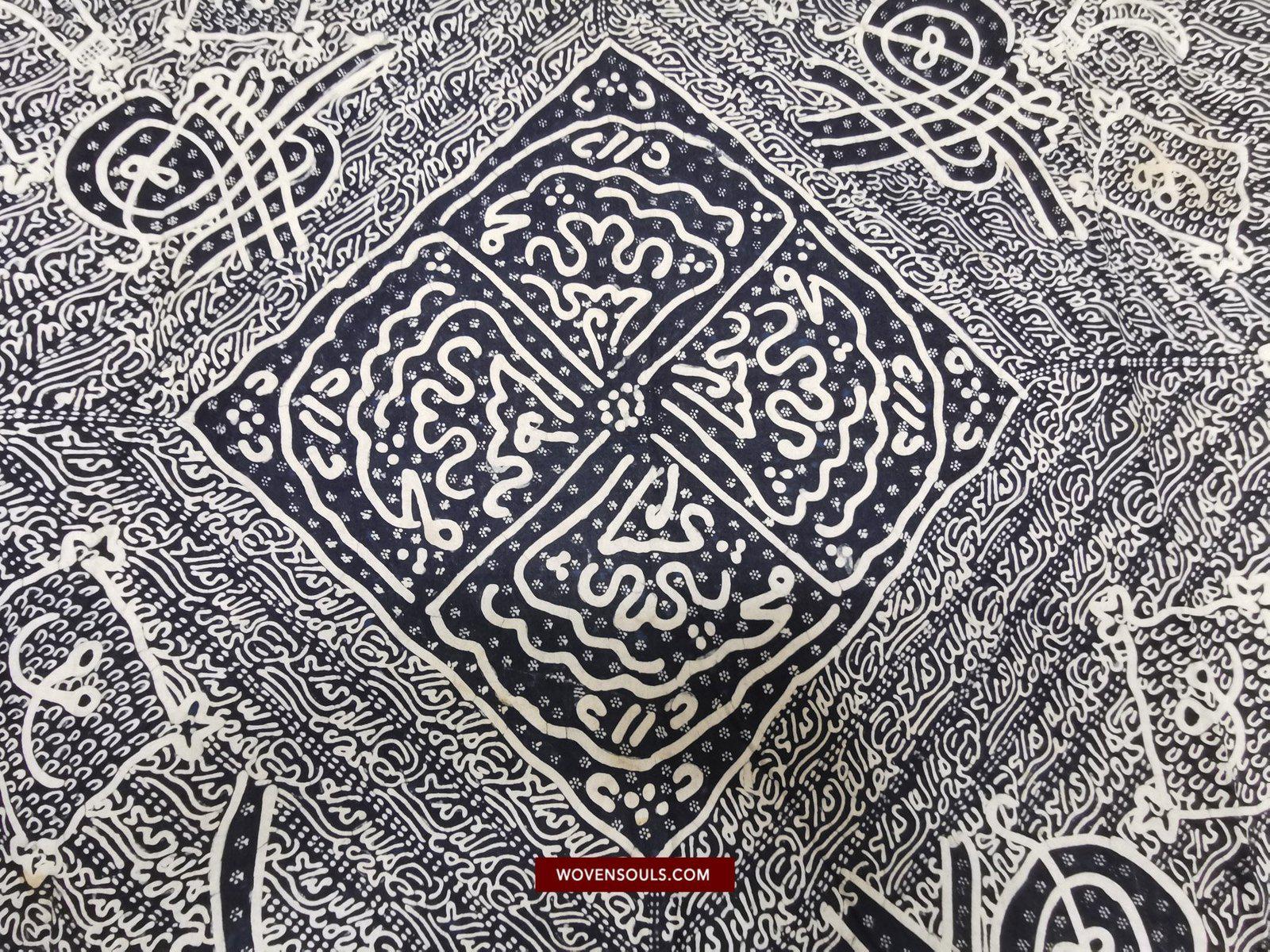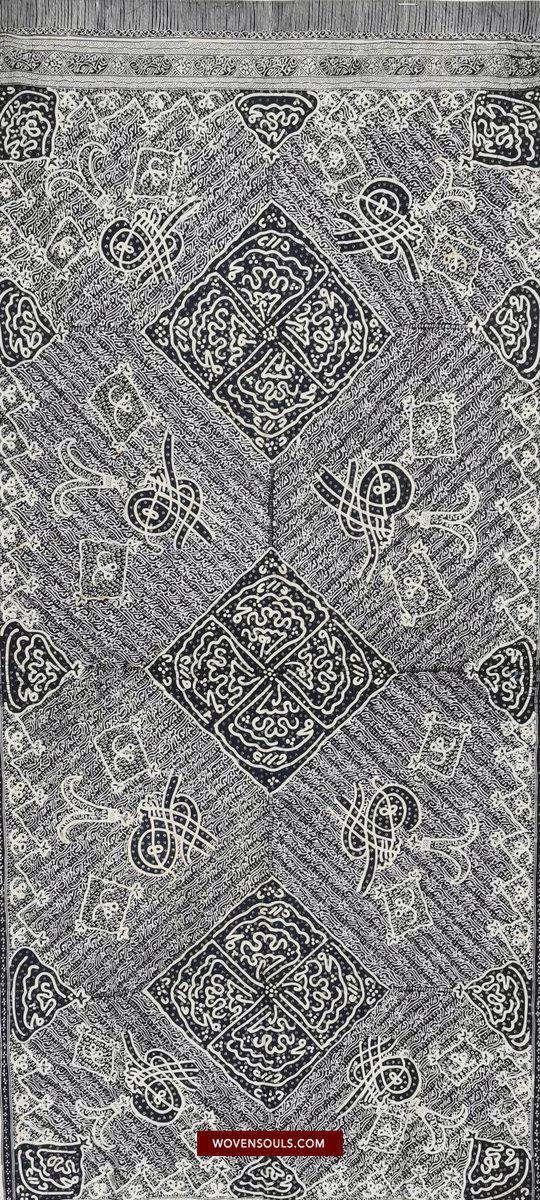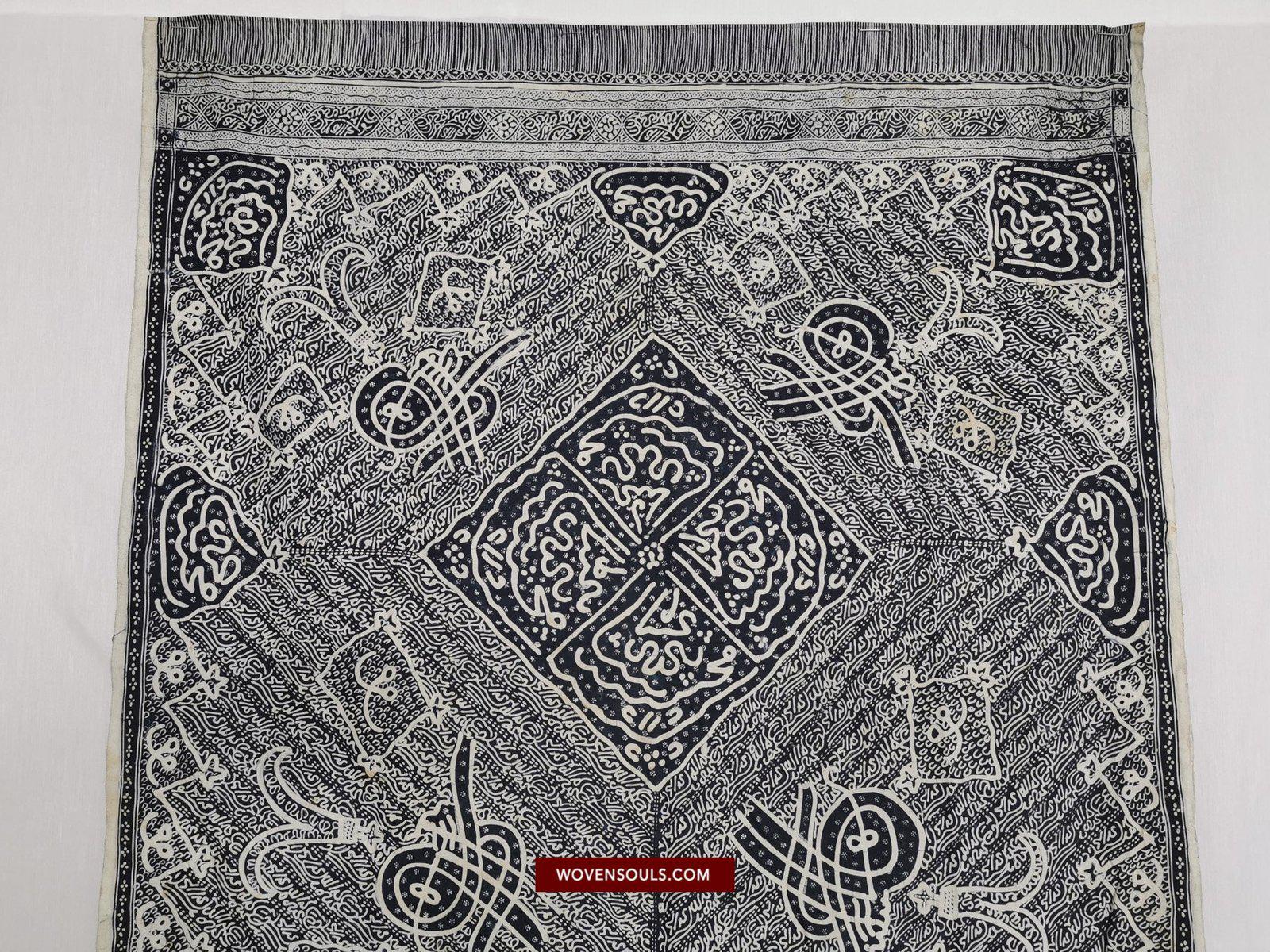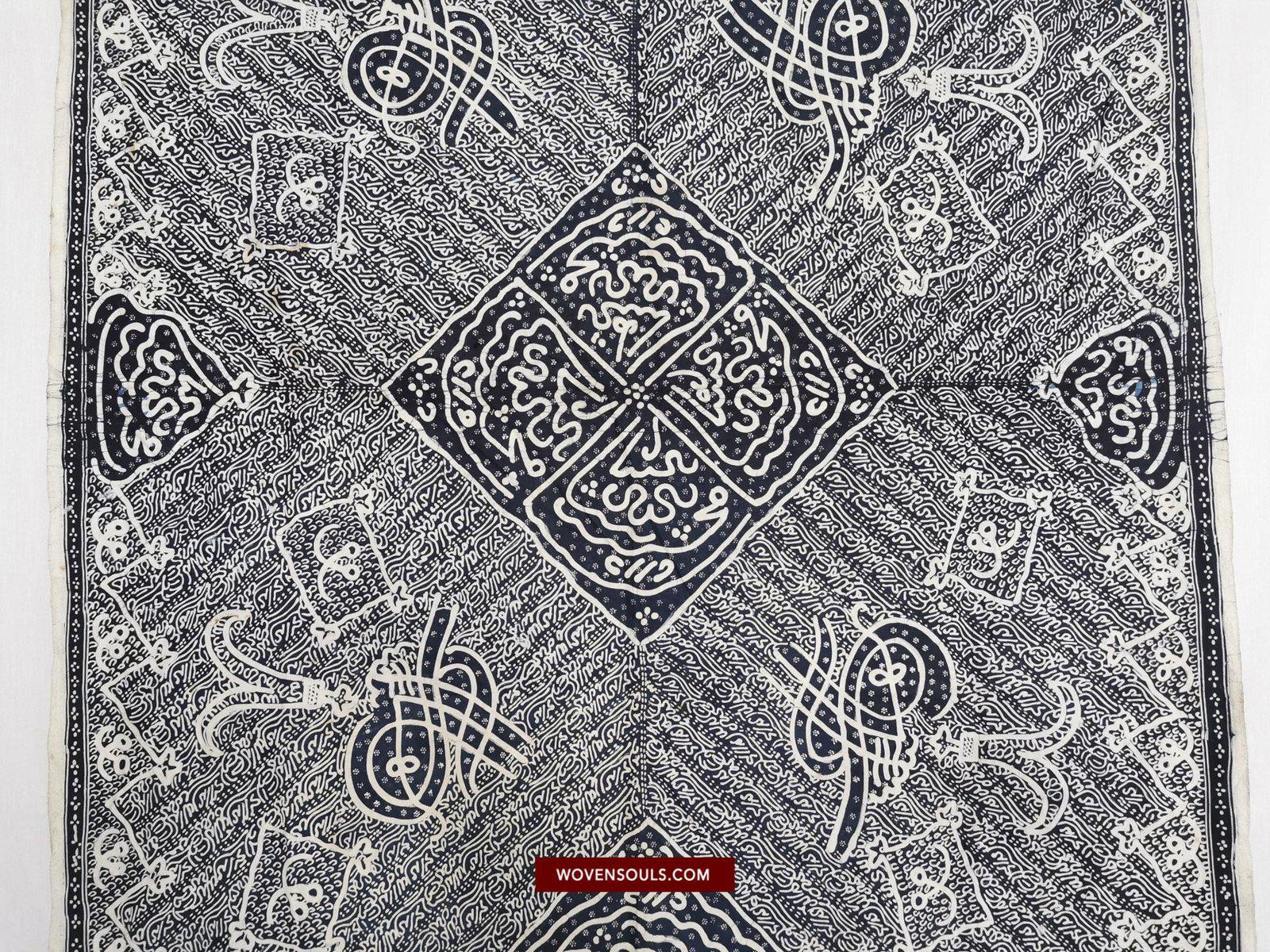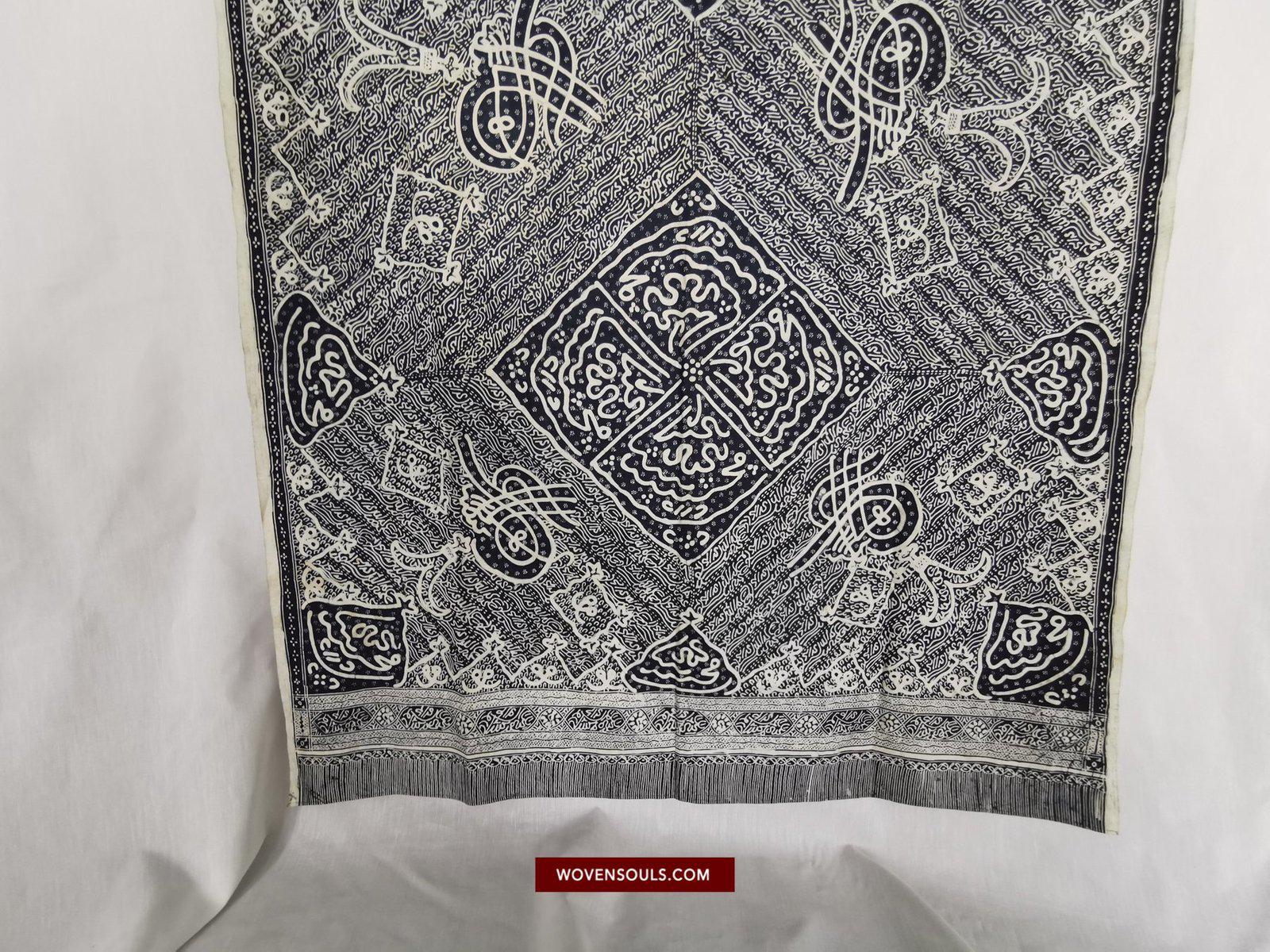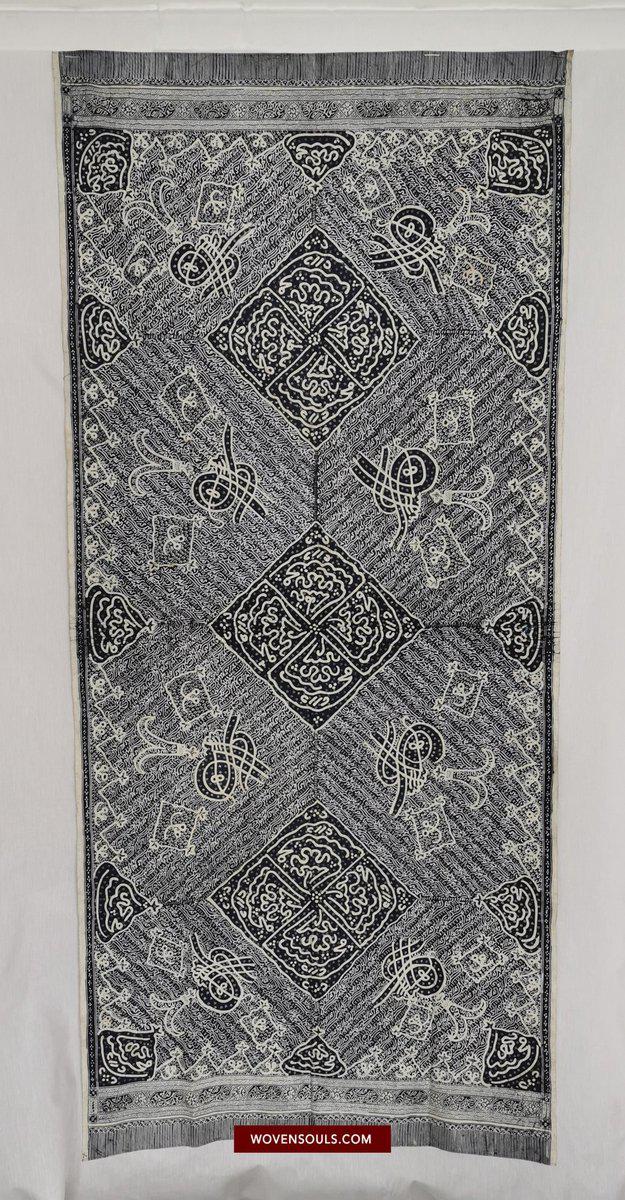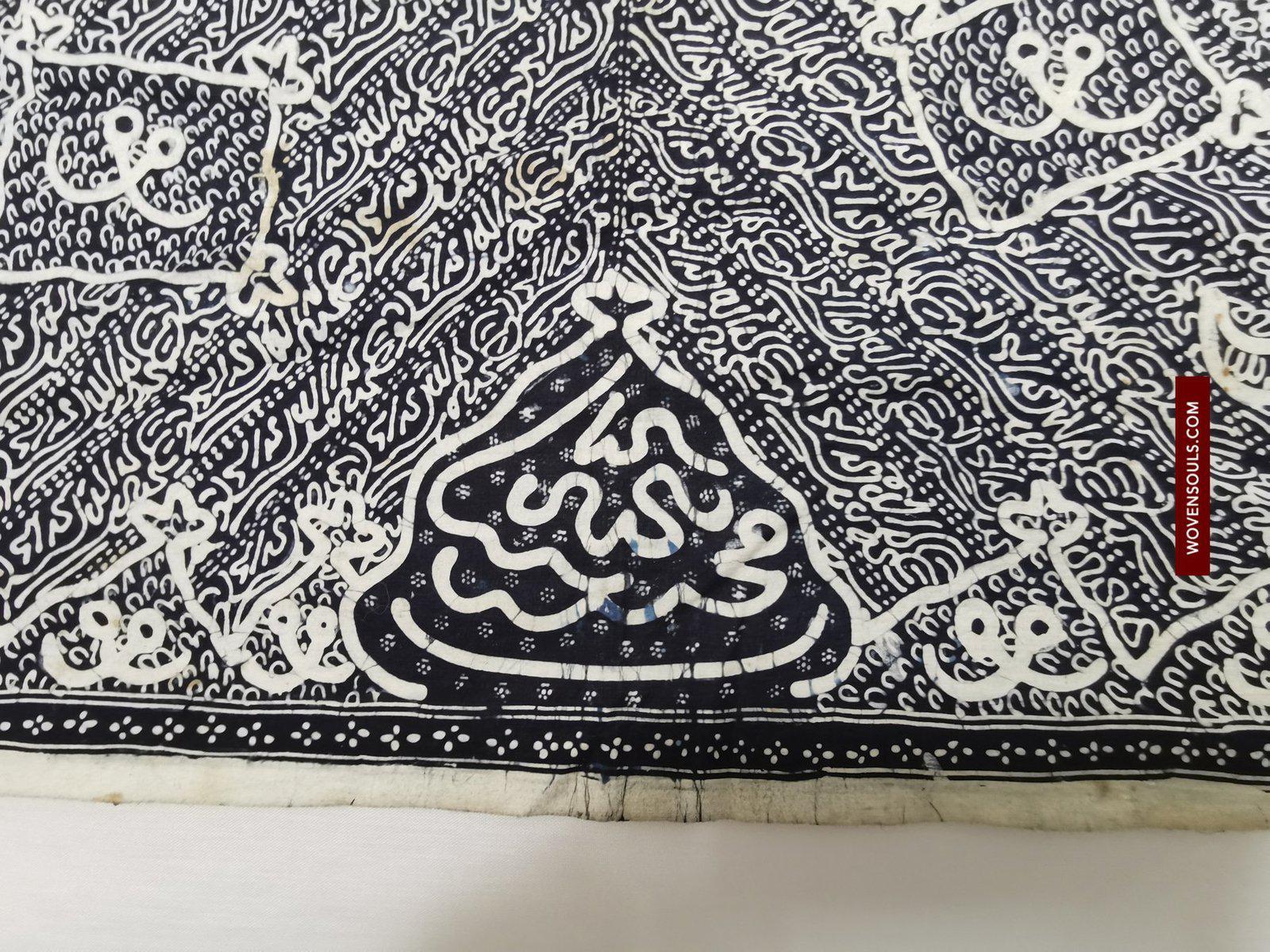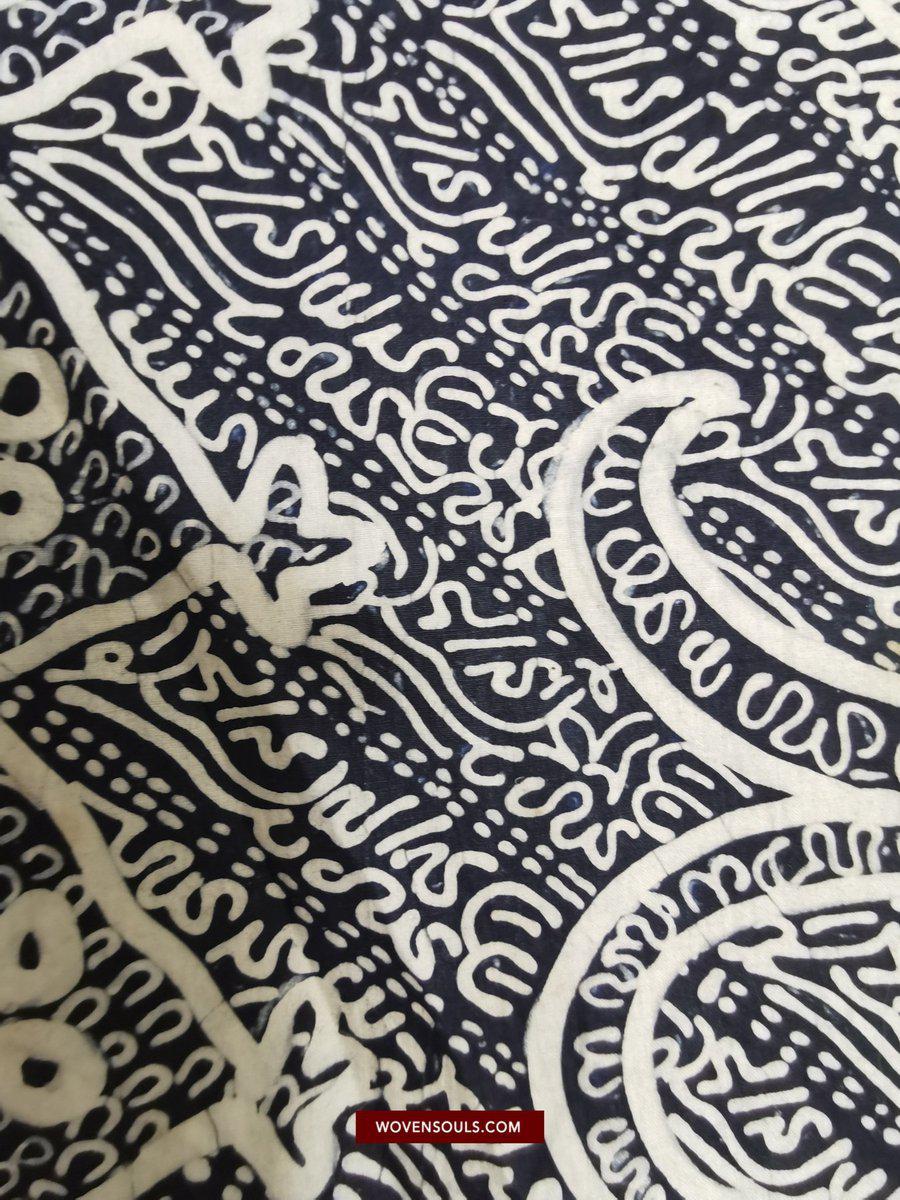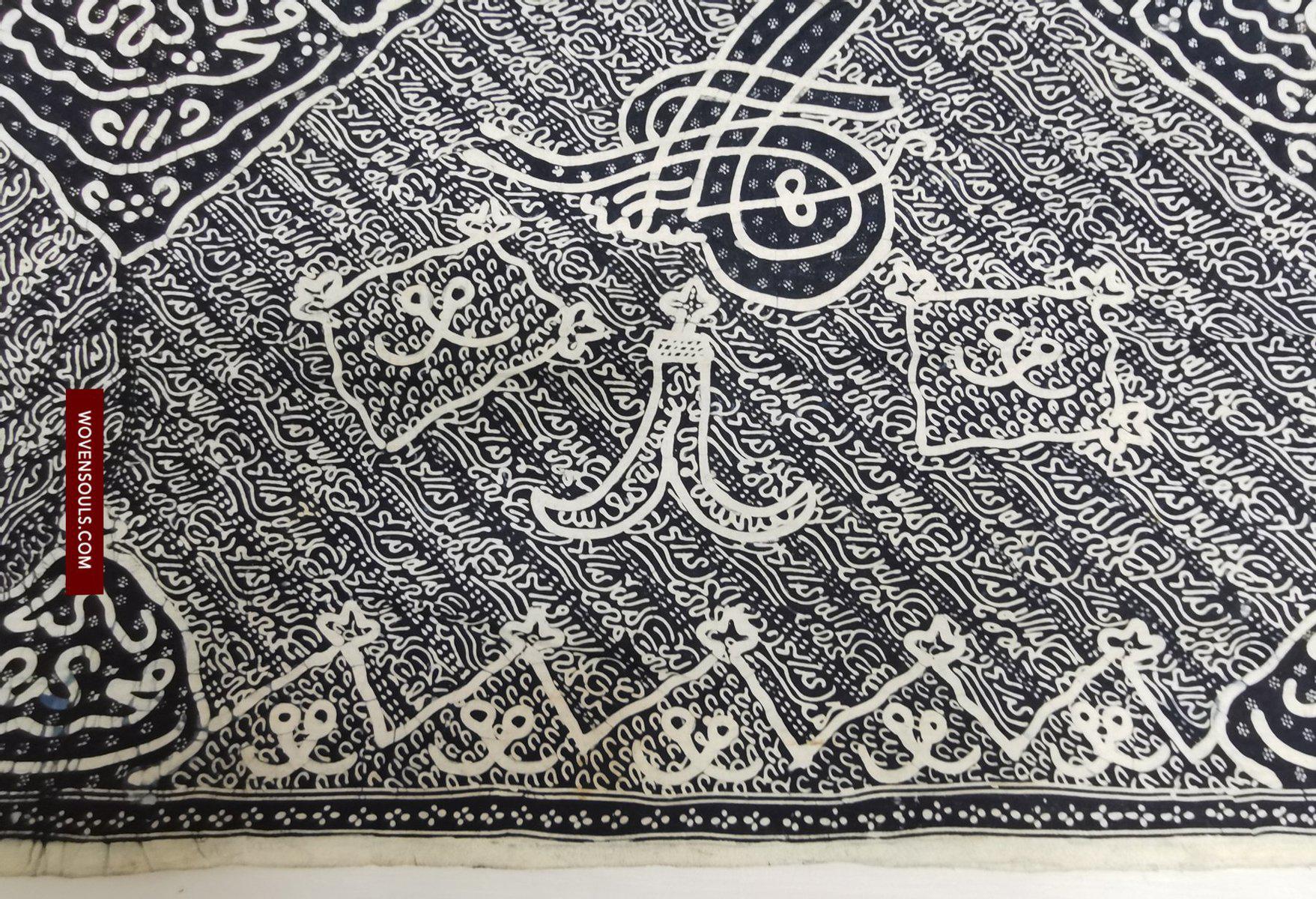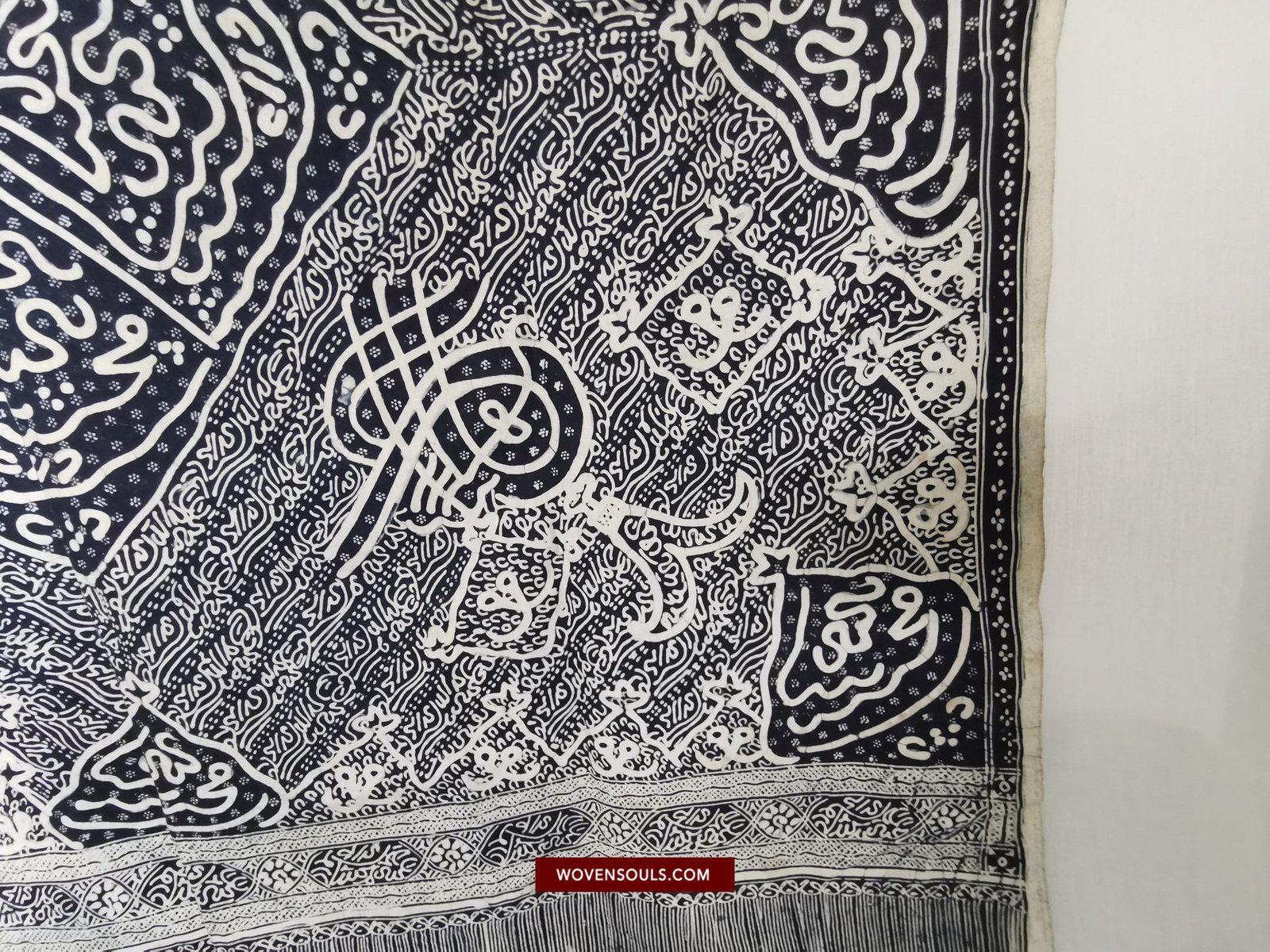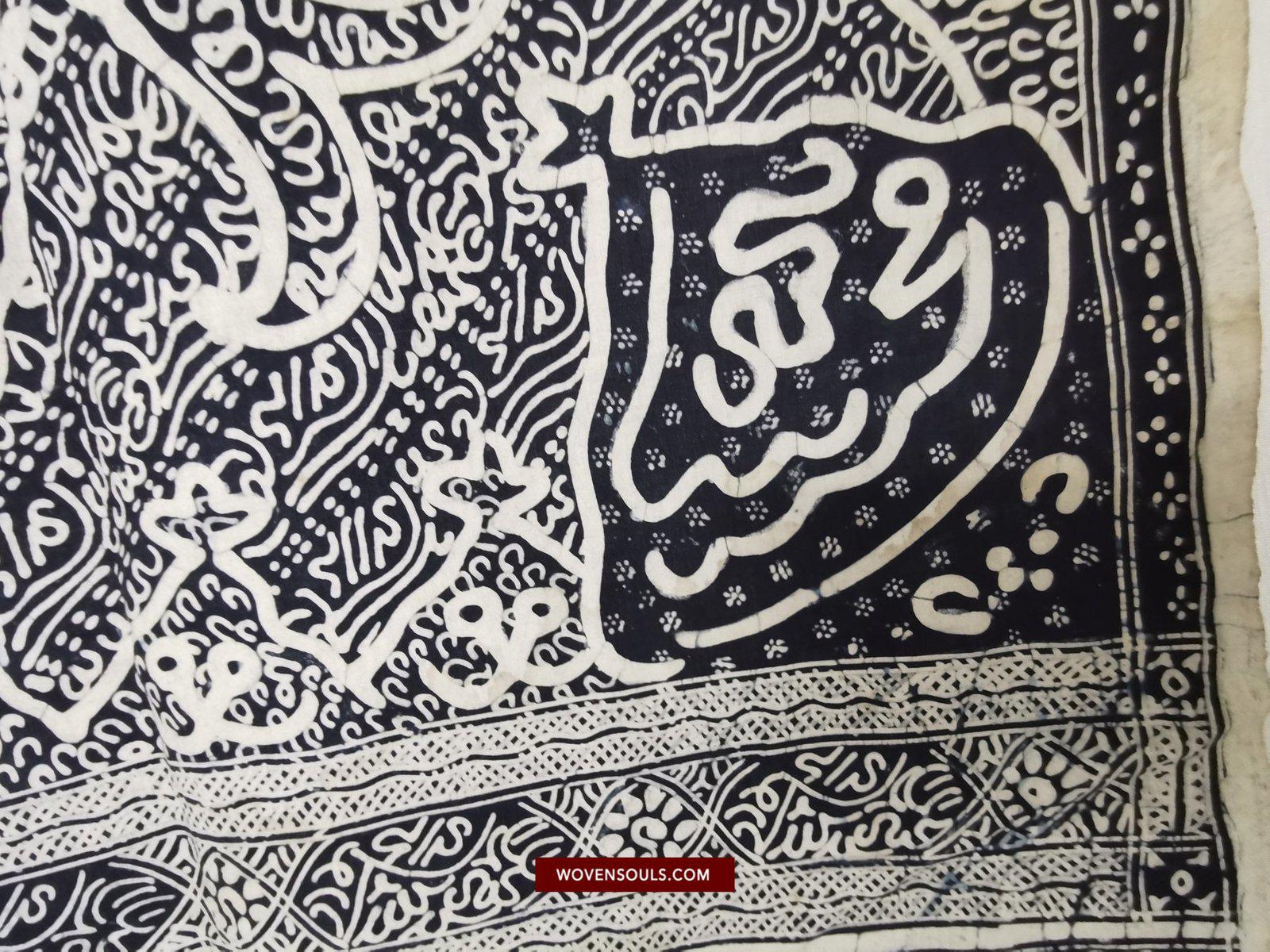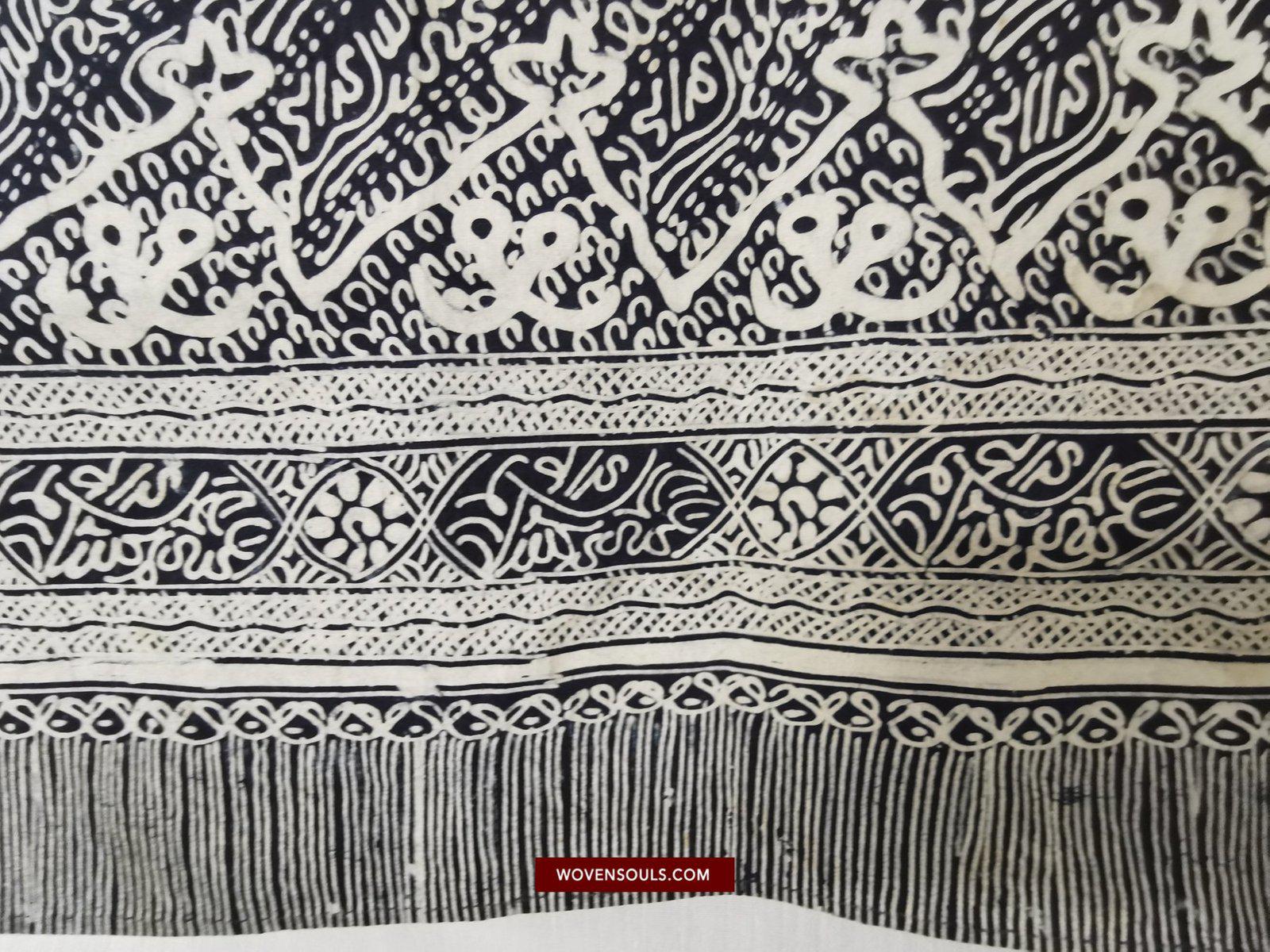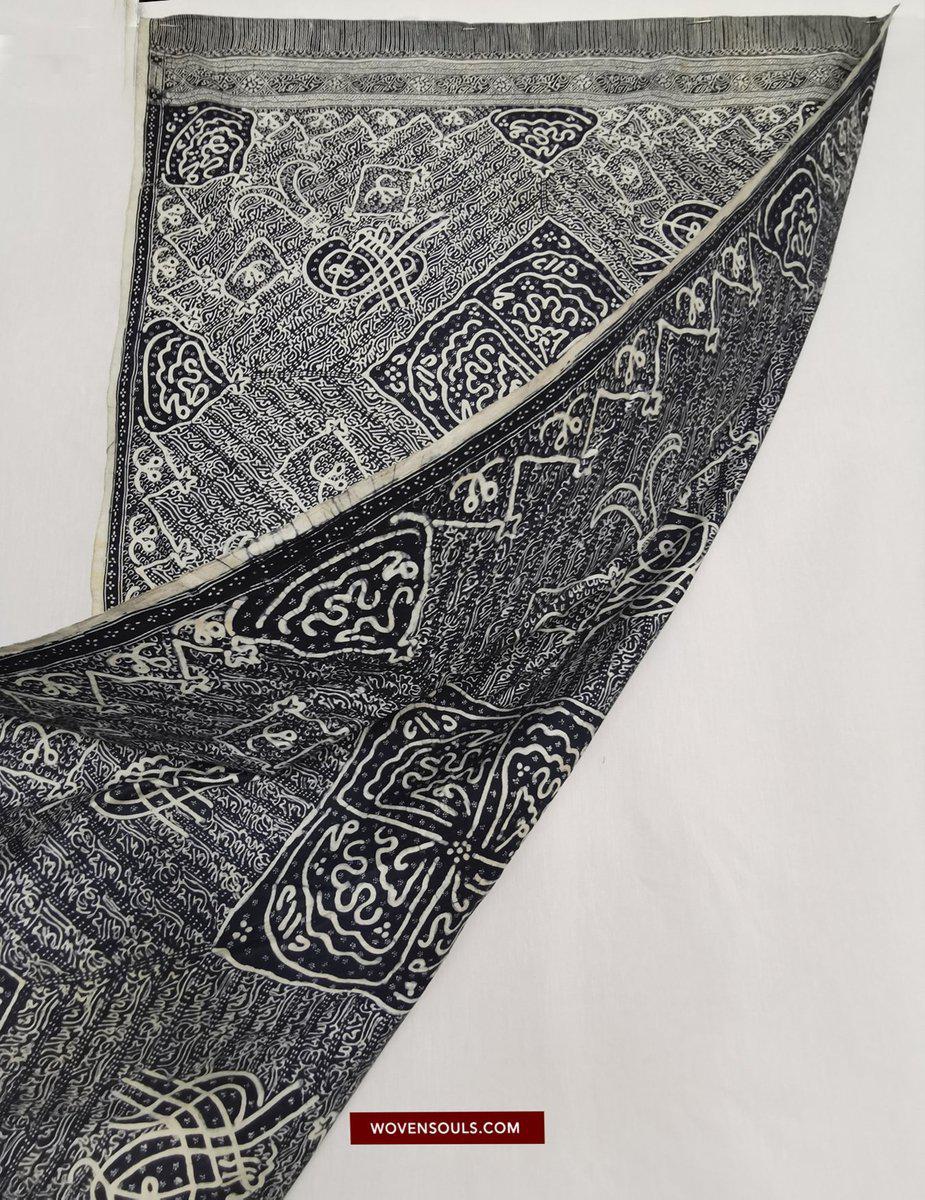1443 Antique Calligraphy Jambi Batik Bertulis Hand Drawn Textile Kain Arab
Antique Batik Jambi Batik Bertulis Hand Drawn Textile Kain Arab
A very rare and sought after Batik Cloth from Jambi, (Sumatra) Indonesia with fine Islamic Calligraphy all over
In the 16th century a diplomatic relationship had been forged between Aceh in Indonesia and the Ottoman Empire. Aceh had confirmed its vassal status and received military support. Hence we see Ottoman influences in Acehnese culture.
After the establishment of Islamic rule in Java & Sumatra from 16th Century onwards, there were several material expressions created as testimony of faith. Batik textiles in the format of long shawls, head cloths and ceremonial hangings were decorated with religious inscriptions. The motifs surrounding the medallions are conjectured to be Ottoman Tughra monograms. The inscribed verses confer protective and talismanic properties onto the wearer / user of the textile.
This long shawl has hand drawn (or Tulis) Arabic calligraphy with 3 Large Diamond Medallions surrounded by motifs. Note the striped edges at both ends - these suggest that the piece was made in Jambi. Note also the text present in the cartouches in the end panels. The motifs surrounding the medallions are conjectured to be Ottoman Tughra monograms.
Used as a ceremonial cloth, this category of calligraphic Batik textiles is very rare.
Those that are found are usually small and square.
Large rectangular cloths are much rarer.
78'' x 35'' (198 x 89 cm). Has minor stains.
Estimated to be from the early 1900s
This textile is still under study.
OTHER EXAMPLES:
Crescent Moon : Islamic Art & Civilization in Southeast Asia
***
This item has spent a lifetime being used for the purpose of its creation with the original artist/user.
It is very likely that signs of this life are present on the piece in the form of stains, thread loss, loose threads, holes, tears, color run and other imperfections.
Therefore the condition must be assumed to be “not” perfect
***
This item has spent a lifetime being used for the purpose of its creation with the original artist/user. Signs of this life lived heartily may be present on the piece in the form of stains, thread loss, loose threads, holes, tears, color run and other imperfections. Therefore the condition must be assumed to be “not” perfect. More photos of such imperfections will be provided on request.
***
